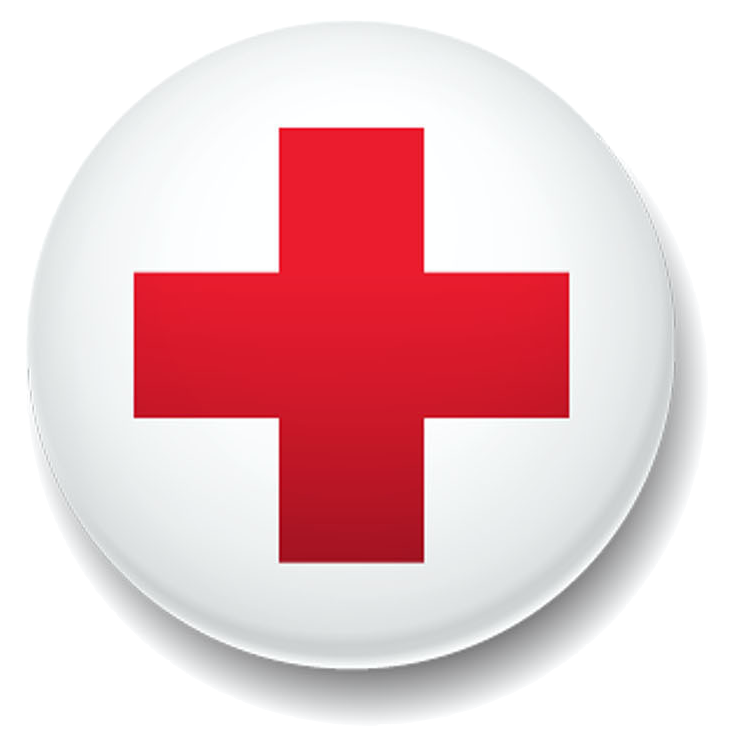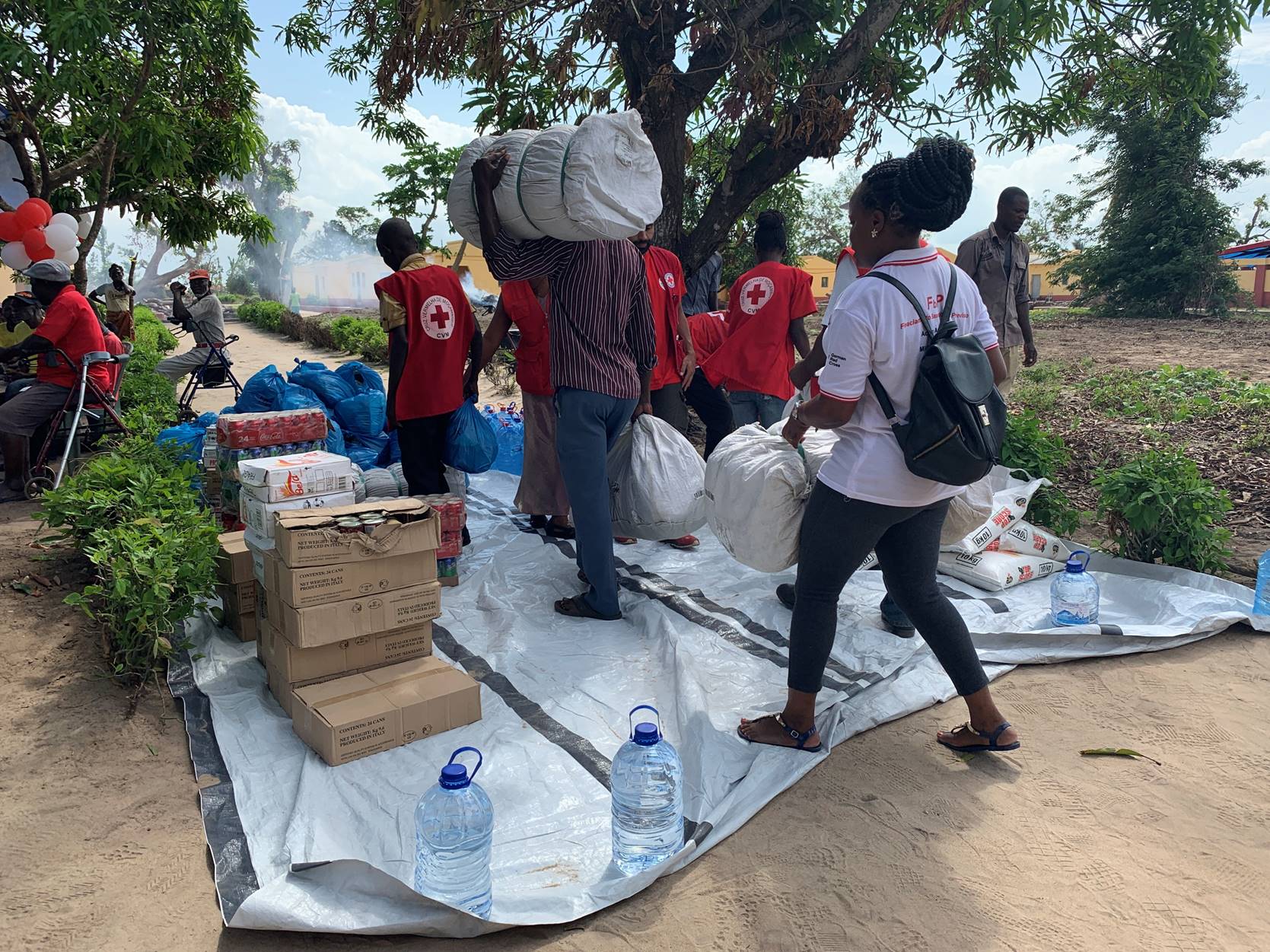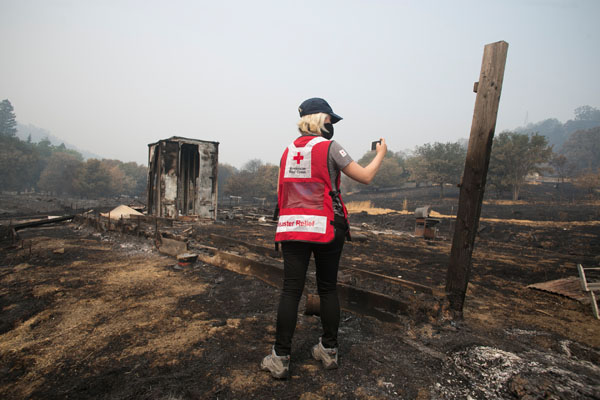By René Amy, Red Cross LA volunteer
It’s kind of strange to think that sometimes, the best way to help is by doing nothing at all — although not in the way that most would expect.
Sometimes, just sitting and waiting to help can make a big difference, as demonstrated by the volunteer workers at the American Red Cross’ recent evacuation point at Santa Anita Park in Arcadia.
Hundreds of thousands of San Gabriel Valley residents received a special alert on their cell phones Tuesday evening about an Evacuation Warning due to the expected spread of the fast-burning Bobcat Fire. That disquieting alert caused a whole lot of people to lose a whole lot of sleep as they rushed to prepare for what seemed (to many) like an almost-certain evacuation of mile upon square mile of staunchly-urban areas.
And, even as that (arguably less-than-fully-explanatory) alert went out, volunteers from the American Red Cross Los Angeles Region were already at work setting up the evacuation point to help any displaced by the fire. News of the location was broadcast far and wide by the media and government agencies, letting folks know that help was nearby should they need it.
A comforting message in times of great uncertainty and angst for so many.
Adding fuel to residents’ fears, strong Santa Ana winds were forecast that night and the following day, and might well have blown the fire down the mountains and into populated areas. Winds above 50 miles per hour did occur, but only high up in the mountains, and while the fire continued to grow, the rightly-worrisome worst-case scenarios did not occur.
We got very, very lucky, and were pretty much spared everything except the tough-to-breathe smoke.
Only a very few people sought refuge from the fire.
Very, very few, indeed – less than a dozen total came to the evacuation point seeking any sort of assistance, and (fortunately) none of those seeking aid had been ordered to evacuate.
Had the fire entered and burned residential areas, there could easily have been hundreds or thousands of folks seeking help.
Throughout the uncertainty, the site, staffed by volunteers all day and all night, was primed, ready, and able to help large numbers of folks.
Volunteers were continuously ready to provide information, housing assistance, and a safe place to rest – along with a healthy dose of deeply caring about others. They sat and waited, and then waited some more, knowing that they might be able to help someone in a time of crisis, should that crisis materialize.
A visit to the site Thursday, September 10, found dozens of unused porta-potties even as the site was scheduled to taken down that same afternoon, and while most of the numerous temporary handwash stations hadn’t washed any hands, they could and would have done so if things had gone differently.
The Santa Anita Evacuation site reopened on Sunday, September 13
Although the evacuation point was closed last week, it’s been reopened, and Red Cross volunteers are now being kept busy helping those in need.
The massive parking lot at Santa Anita Park can hold some 20,000 cars, and while it was operating, dozens of Red Cross volunteers pulled 12-hour shifts.
Perhaps the most-telling aspect is that many volunteers came from considerable distance to help complete strangers. In an area where the thought of picking up a friend from LAX often gives folks pause, volunteers willingly gave up not only their day (or night) but many drove as much as an hour each way as well.
One volunteer explained that he had recently completed a 14-day volunteer deployment to help folks in Northern California, and on his return, was called to see if he would help out locally – so there he was, once again miles from his own home.
Red Crossers (as volunteers are frequently called) volunteer because they want to help – and if helping means sitting with nothing to do because nothing bad has happened, Red Crossers are among that special breed of people who take great comfort in that. Red Cross volunteers run the gamut of ages, backgrounds, interests, and abilities, but all share the (un)common desire to help others in need.
At the site, more than half-a-dozen volunteers sat around the table, passing the time in good-spirited conversation, laughing about their situation – all (perhaps unexpectedly) very, very glad that they weren’t busy.
What’s the bottom line?
First – be prepared. We live in wildfire country, and if not this time, you can be sure that sometime in the future, those living along the urban/wildland interface will need to evacuate, perhaps with very little notice. Visit PrepareSoCal.org for more information – and actually prepare that emergency plan and kit you’ve put off getting around to. Don’t be left with only memories of what once was, when you can take real steps to protect yourself, your loved ones, and your property.
Second – be part of the solution. Volunteer with the Red Cross. 90% of the work done by the American Red Cross is done by volunteers. There are more ways to help through the Red Cross than many might imagine possible, and a whole lot of important volunteer work can be even done from home. If volunteering doesn’t appeal, please consider making a monetary and/or blood donation.
Third, and perhaps most important – be thoughtful and be considerate of your neighbors. We’re all in this together, and by helping each other, we can keep our communities vibrant, strong, and healthy.
This story originally appeared in the publication Colorado BLVD on Sept. 14, 2020 and can be viewed there.





